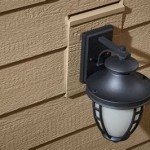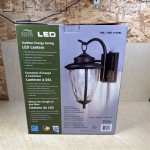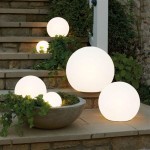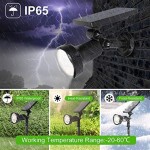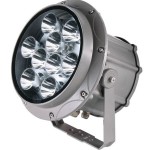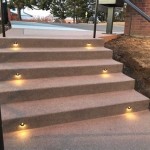Outdoor Landscape Lighting with Metal Halide: A Comprehensive Guide
Outdoor landscape lighting plays a pivotal role in enhancing the aesthetic appeal, security, and functionality of properties. Various lighting technologies are available, each with unique characteristics and applications. Metal halide, a type of high-intensity discharge (HID) lamp, has historically been a popular choice for illuminating large outdoor areas due to its high light output and energy efficiency compared to traditional incandescent or halogen lamps. This article provides a comprehensive overview of metal halide landscape lighting, discussing its advantages, disadvantages, applications, installation considerations, and maintenance requirements.
Metal halide lamps produce light by passing an electric arc through a mixture of mercury vapor and metal halides (typically iodides). This process excites the metallic compounds, causing them to emit light across a broad spectrum. The specific metal halides used in the lamp determine the color temperature and color rendering properties of the light produced. Different metal halides can be combined to tailor the light output to specific applications, such as accentuating foliage, highlighting architectural features, or providing general area illumination.
The construction of a metal halide lamp typically includes an inner arc tube made of quartz or ceramic, surrounded by an outer glass bulb. The arc tube contains the mercury and metal halide mixture, while the outer bulb provides insulation and filters out harmful ultraviolet (UV) radiation. Metal halide lamps require a ballast to regulate the electrical current and provide the high voltage necessary to start the arc. The ballast also ensures that the lamp operates at the correct voltage and current levels, preventing damage to the lamp and ensuring optimal light output.. Metal halide systems are more complex than simpler lighting options like LEDs but offer specific performance characteristics that made them attractive for certain applications before the widespread adoption of LED technology.
Key Advantages of Metal Halide Landscape Lighting
Metal halide lamps possess several advantages that have contributed to their widespread use in outdoor lighting applications. These advantages include high luminous efficacy, relatively long lifespan (compared to incandescent), and good color rendering properties.
High Luminous Efficacy: Metal halide lamps are known for their high luminous efficacy, meaning they produce a large amount of light per unit of energy consumed. This makes them more energy-efficient than incandescent and halogen lamps, resulting in lower electricity bills and reduced carbon footprint. Luminous efficacy is typically measured in lumens per watt (lm/W). Metal halide lamps can achieve luminous efficacies ranging from 65 to 115 lm/W, significantly higher than incandescent lamps which typically produce around 10 to 20 lm/W. This higher efficacy allows for brighter illumination with less energy consumption. However, it is essential to note that LED technology has now surpassed metal halide in terms of luminous efficacy for many applications.
Relatively Long Lifespan: Compared to incandescent lamps, metal halide lamps have a relatively long lifespan, reducing the frequency of replacements and lowering maintenance costs. The lifespan of a metal halide lamp typically ranges from 5,000 to 15,000 hours, depending on the specific lamp type and operating conditions. In contrast, incandescent lamps typically last only around 1,000 hours. The longer lifespan of metal halide lamps translates to fewer replacements, which can be particularly beneficial in hard-to-reach or high-mounted outdoor lighting fixtures, reducing labor costs and downtime.
Good Color Rendering Properties: Metal halide lamps generally offer good color rendering properties, meaning they accurately reproduce the colors of illuminated objects. Color rendering is measured by the Color Rendering Index (CRI), which ranges from 0 to 100, with higher values indicating better color rendering. Metal halide lamps typically have a CRI of 65 to 90, providing relatively accurate color representation. This is beneficial for landscape lighting applications where it is important to accurately display the colors of plants, flowers, and architectural features. However, it is crucial to select metal halide lamps with appropriate color temperatures to complement the landscape design and create the desired ambiance.
Disadvantages and Considerations with Metal Halide
Despite their advantages, metal halide lamps also have certain disadvantages that must be considered before implementation in outdoor landscape lighting projects. These include a warm-up period, restrike time, potential for color shift, and the presence of mercury.
Warm-up Period: Metal halide lamps require a warm-up period to reach their full light output. This warm-up period can range from several minutes to up to 10 minutes, depending on the lamp type and ambient temperature. This delay can be problematic in applications where instant illumination is required, such as security lighting or emergency lighting. In these situations, alternative lighting technologies like LED, which offer instant-on capabilities, may be more suitable.
Restrike Time: If a metal halide lamp is turned off or experiences a power interruption, it requires a restrike time before it can be turned back on. This restrike time can also be several minutes, as the lamp needs to cool down sufficiently before it can be restarted. This delay can be a significant inconvenience in situations where immediate relighting is necessary. This restrike time is due to the need for the arc tube to cool down before the internal pressure is reduced enough to allow the arc to restart.
Potential for Color Shift: Over time, metal halide lamps can experience a color shift, meaning the color temperature and color rendering properties of the light can change. This can result in inconsistent lighting across the landscape and may require periodic lamp replacements to maintain uniform color appearance. Color shift is caused by the gradual degradation of the metal halides within the lamp and can be exacerbated by factors such as voltage fluctuations and temperature variations.
Presence of Mercury: Metal halide lamps contain mercury, a hazardous substance that can pose environmental risks if not handled and disposed of properly. When a metal halide lamp reaches the end of its lifespan, it must be recycled or disposed of in accordance with local regulations to prevent mercury contamination. The presence of mercury has driven the development and adoption of mercury-free lighting alternatives like LED, which offer a more environmentally friendly solution.
Applications of Metal Halide in Landscape Lighting
Metal halide lamps have been traditionally used in a variety of landscape lighting applications, particularly for illuminating large areas and highlighting specific features. Although LED technology has largely superseded metal halide in many of these applications, understanding these past uses provides context for the technology's strengths and weaknesses.
Area Lighting: Metal halide lamps are well-suited for providing general area lighting in large outdoor spaces, such as parking lots, parks, and sports fields. Their high light output and wide beam angles can effectively illuminate these areas, improving visibility and safety. In these applications, metal halide lamps are typically mounted on poles or buildings to provide uniform illumination over a large area. However, LED floodlights and area lights are increasingly preferred due to their superior energy efficiency, longer lifespan, and instant-on capabilities.
Accent Lighting: Metal halide lamps can also be used for accent lighting, highlighting specific features such as trees, shrubs, sculptures, and architectural elements. By strategically positioning metal halide fixtures, it is possible to create dramatic shadows and emphasize the shape and texture of these features. In accent lighting applications, narrow beam angles are often used to focus the light on the desired object, while adjustable fixtures allow for precise aiming and control of the light beam.
Security Lighting: Due to their high light output, metal halide lamps have traditionally been used for security lighting, deterring intruders and improving visibility around buildings and properties. In security lighting applications, metal halide fixtures are often equipped with motion sensors that automatically activate the lights when movement is detected. However, the warm-up time and restrike time of metal halide lamps can be a disadvantage in security applications, making LED fixtures a more responsive and reliable alternative.
Facade Lighting: Metal halide lamps can be used to illuminate building facades, enhancing their architectural details and creating a visually appealing nighttime presence. By using uplighting and downlighting techniques, it is possible to highlight the building's features and create a dramatic effect. In facade lighting applications, it is important to select metal halide lamps with appropriate color temperatures to complement the building's materials and architectural style.
The ongoing shift towards LED technology significantly impacts the use of metal halide in landscape lighting. While metal halide once offered advantages in terms of light output and energy efficiency compared to older technologies, LED now surpasses it in almost every performance category. Cost considerations, environmental concerns related to mercury content, and the superior performance of LED are driving this transition.

Well Light Metal Halide Hid 120v Inground Landscape Grand

M Series Pathlights 12v 120v Led Metal Halide Multi Louver Beachside Lighting Honolulu

Ip66 Outdoor Reflector Paper Metal Halide Portable Die Flood Lamp Light Empty Housing 50w Led China Lights Made In Com

Hyperikonpro 115w Led Shoebox Street Light Rotatable Metal Halide Replacement 13500 Lumens Bright Outdoor Area Lighting Large Mogul E39 Base Ul 5000k Pole Com

Led Parking Lot Light 150w Shoebox Area 400w Metal Halide Equivalent Optional Photocell 20 250 Lumens 5000k Super Bright Leds

The Complete Guide To Led Landscape Lighting Grnled

Landscape Lighting Ideas Flip The Switch

Brief Ysis Of Outdoor Lighting Zhl Group

Security Lighting Safety Outdoor Delmarfans Com

Spring Cleaning For Landscape Lighting Systems Fixtures Bulbs Wires
Related Posts

